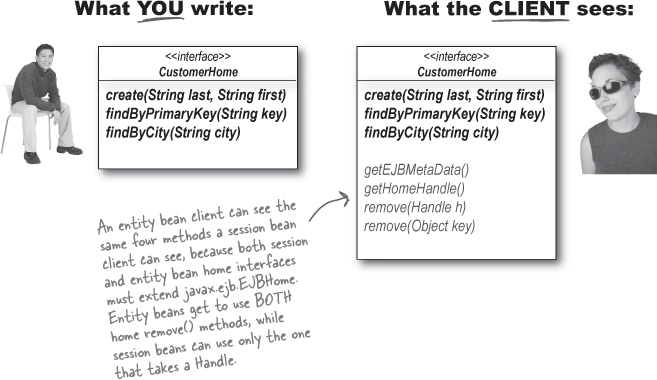Entity bean Remote home interface
How it’s different from a session bean home interface:
You’re more likely to find an existing entity than create a new one
As a client, you’ll probably spend a lot more time using references to existing customers, than you’ll spend creating new customers. Whether you’re updating a specific customer or doing a batch operation on many customers, you’ll need home interface code that lets you select customers, more than you’ll need creation methods. In fact, the create() method is optional for entity beans! (Because you might have a policy that says new entries in the database must be done directly through a database admin tool, for example.) But you’re required to put at least one finder method for an entity bean home—you can have as many finders as you like, but you must have find By PrimaryKey(String primaryKey) in every entity home. (Which means it might be the only method declared in the home interface.)
You might want to do queries that involve more than one entity
Since session beans represent process, it doesn’t make sense to, say, get multiple instances of the same process. But with entity beans, you might want to do the same things you’d do on a database table, like find all the customers who live in Helsinki and enjoy surfing.

Get Head First EJB now with the O’Reilly learning platform.
O’Reilly members experience books, live events, courses curated by job role, and more from O’Reilly and nearly 200 top publishers.

